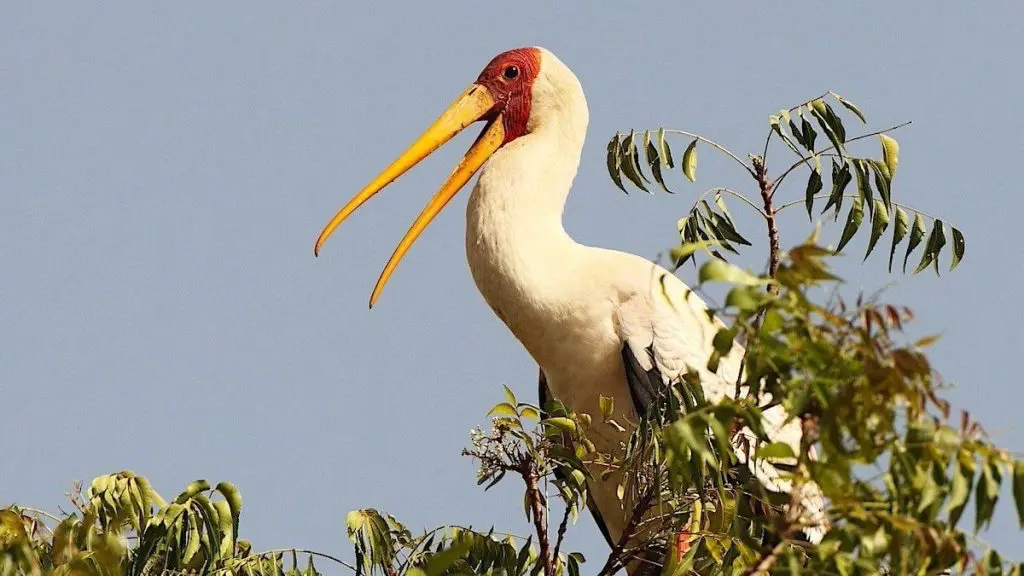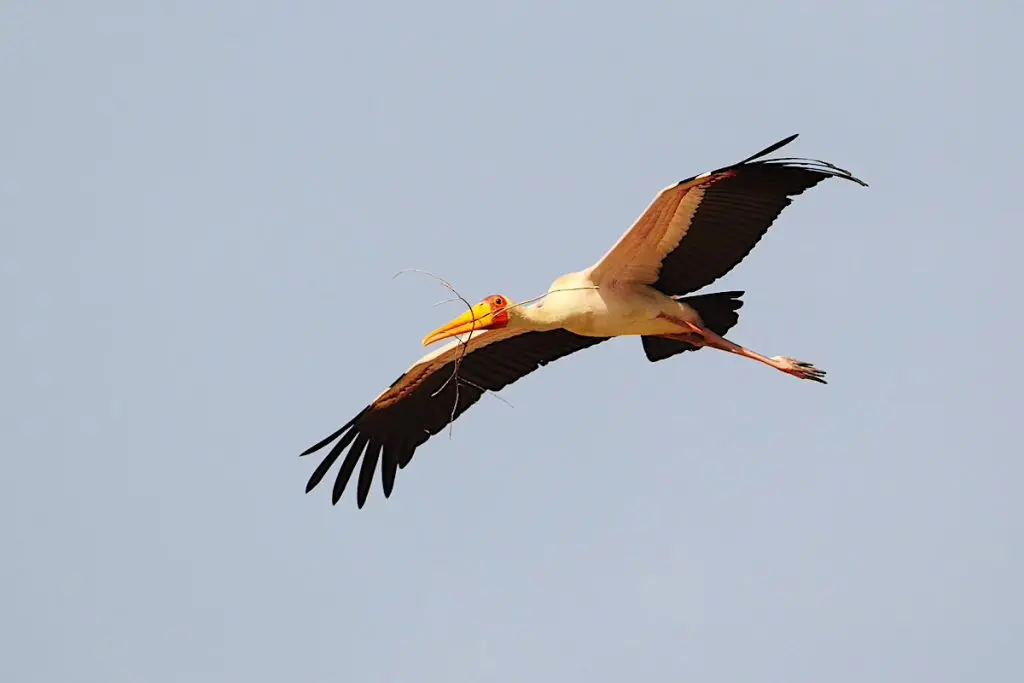The Yellow-billed Stork although sometimes known as a Wood Stork or Wood Ibis is actually a true Stork.
The pictures below are of breeding adults and can be distinguished from juveniles by the colour of their backs. Adults have white backs and juveniles have grey backs.
Bird information.
Where is the Yellow-billed Stork found?
The Yellow-billed Stork is found a short stroll away from Footsteps at the wetlands. They also like shallow lakes and mudflats.
In The Gambia for example this delightful wading bird is not common but with the right guide is definitely a possibility.
What does it look like?
A medium-sized stork stands at around 100cm tall. The body is white with a short black tail that is glossed green and purple when freshly moulted. The bill is deep yellow, slightly decurved at the end and has a rounder cross-section than in other stork species outside the Mycteria. Feathers extend onto the head and neck just behind the eyes, with the face and forehead being covered by deep red skin. Both sexes are similar in appearance, but the male is larger and has a slightly longer heavier bill. Males and females weigh approximately 2.3 kg and 1.9 kg respectively.
What does it feed on?
They feed on small freshwater fish which they catch by wading through shallow waters with their bills open, ready to snap shut on their prey with lightning speed.
Want to know an interesting Factoid?
The yellow-billed stork has been featured on the postage stamps of many African countries.
How does it sound?
Generally non-vocal, but will be heard hissing in the breeding season. These storks also engage in bill clattering and an audible “woofing” wing beat at breeding. Nestlings make a loud continual monotonous braying call to beg parental adults for food.



